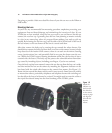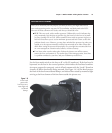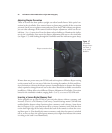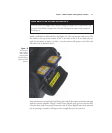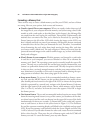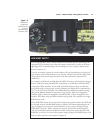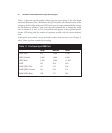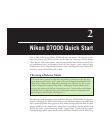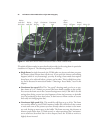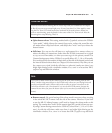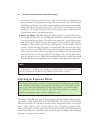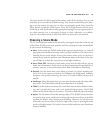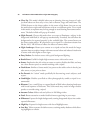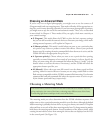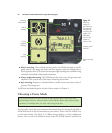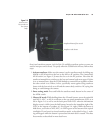
I’ll explain all these modes in more detail and provide tips for using them in particular
situations in Chapter 8. The Shooting modes are as follows:
■ Single frame. In single shot mode, the D7000 takes one picture each time you press
the shutter release button down all the way. If you press the shutter and nothing
happens (which is very frustrating!), you may be using a focus mode that requires
sharp focus to be achieved before a picture can be taken. This is called focus prior-
ity, and is discussed in more detail under “Choosing a Focus Mode,” later in this
chapter.
■ Continuous low speed (C
L
). This “low speed” shooting mode can be set to pro-
duce bursts of 1 to 5 frames per second (the latter hardly qualifies as low speed).
You can set the frame rate in the Custom Settings menu entry CSM #d6. I use this
setting when slicing a scene into tiny fragments of time isn’t necessary or desirable
(say, I’m bracketing in three shot bursts, or don’t want a zillion versions of a scene
that really isn’t changing that fast).
■ Continuous high speed (C
H
H
). This mode fires off shots at up to 6 fps. The frame
rate can slow down as your D7000’s memory buffer fills, which forces the camera
to wait until some of the pictures you have already taken are written to the mem-
ory card, freeing up more space in the buffer. The frame rate may also decrease at
shutter speeds slower than 1/250th second, or when operations like Continuous-
servo autofocus (described later in this chapter) force the D7000 to work at a
slightly slower interval.
David Busch’s Nikon D7000 Guide to Digital SLR Photography26
Figure 2.1 Hold down the lock release and rotate the dial to choose a release mode.
Release
mode dial
lock release
Release
mode dial
Single
shooting
Continuous
low
Continuous
high
Quiet
shutter
release
Self-timer
Remote
control
Mirror Up



